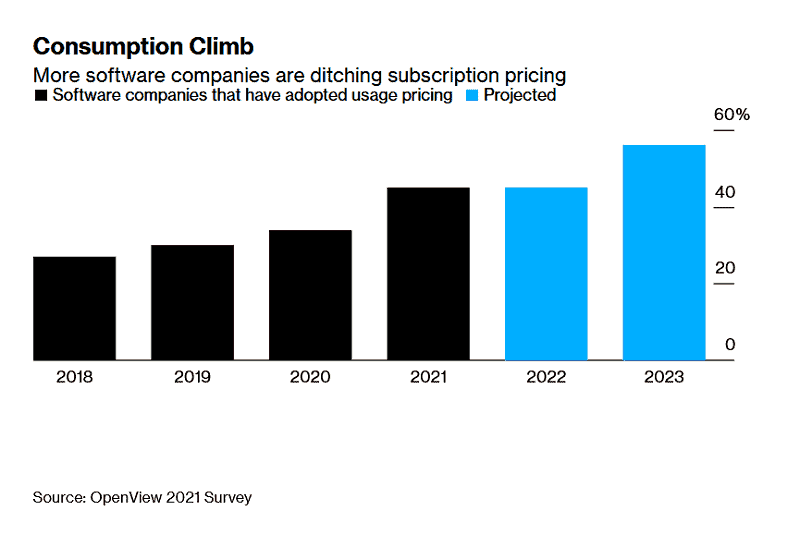Software vendors increasingly favour pay-as-you-go models over traditional subscription models, according to a Bloomberg analysis of several major software companies.
Pay-as-you-go payment models, in which end users only pay when software or services are in use, are increasingly popular, according to Bloomberg. This model was pioneered by Snowflake and is winning territory from traditional subscription models at more and more tech companies. Companies such as C3.ai and Autodesk are embracing pay-as-you-go.
The trend is striking, as many analysts have warned against this model in the past. They feared that customers of pay-as-you-go software and services are less likely to use the tools during tough times, resulting in less revenue for the provider.
Economic conditions
Companies like Snowflake claim that economic uncertainty and financial constraints can actually make pay-as-you-go more attractive. The data specialist has recently seen an uptake of its data storage and analytics products. Customers with tight budgets are happy to pay for what they actually use, rather than being locked into long-term contracts, Bloomberg writes.
Companies that bet on long-term subscriptions, such as Salesforce and ServiceNow, have seen a decline in their subscriptions as of late. According to Bloomberg, even big hyperscalers are increasingly switching to pay-as-you-go models as a result. Although tech giants like AWS, Google Cloud and Microsoft Azure have long made it possible to pay for certain services on the basis of usage, the model has recently seen a spurt of adoption across their portfolio.

Criticism on pay-as-you-go
Some software companies are unconvinced of the sanctified payment model. According to Atlassian, the model works is ineffective for collaboration services, which typically don’t use constant server capacity. Per-user subscriptions remain the standard for these services.
The pay-as-you-go model has also been criticized in other areas. According to Bloomberg, the model is ineffective when prices rise. The phenomenon is known as the ‘taximeter effect’. Research shows that when costs continuously rise, users refrain from using a service. Users prefer a simple payment model in the case of fluctuating costs.
Proponents of pay-as-you-go remain enthusiastic nevertheless. They consider the payment model to be especially suitable for smaller companies that cannot afford a full subscription for a tech company’s entire suite. Some even assume that tech vendors who refuse to switch to pay-as-you-go may well go under over time, Bloomberg writes.
